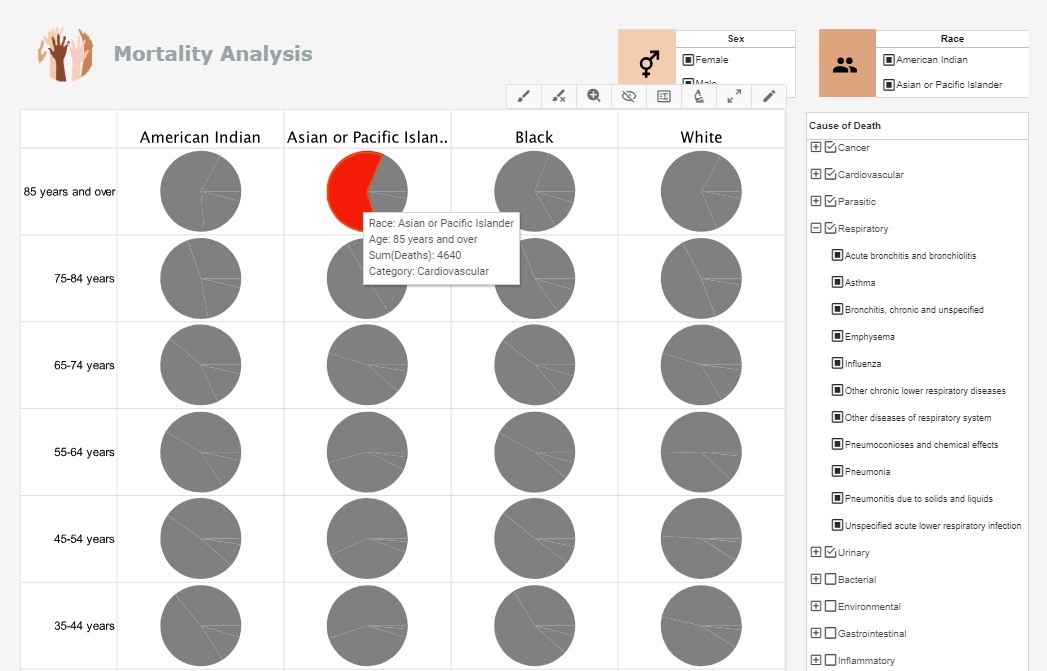Using Analytics to Increase Staffing Productivity and Improve Hospital Operations
Below is the transcript of a webinar hosted by InetSoft on the topic of Using Analytics to Increase Staffing Productivity and Improve Hospital Operations. The presenter is Abhishek Gupta, Chief Data Scientist at InetSoft.
Today we will highlight the many ways that our customers are using data to disrupt industries and business processes in the healthcare industry, specifically in the hospital management sector. Presenting for us today is the Director of Data Management at Centre Hospitalier Universitaire de Quebec.
At the hospital one of the research projects includes staffing workloads and productivity, operational metrics such as throughput, capacity management and regulatory compliance and more. Currently they are using AI and advanced analytics to predict outcomes related to sepsis, denial of paper resources, staffing and employee turnover.
We have a team called Data Management and Performance Measurement. Let's call them DM and PM. Today we would like to share with you a little bit about of our hospital and our team. The hospital's mission is to take exceptional care of people. In doing that we have gone through a journey of transformation of knowledge, of position and growth, in which it depend on the right strategies and technologies.
| #1 Ranking: Read how InetSoft was rated #1 for user adoption in G2's user survey-based index | Read More |
Creating a Data Management Team
My data management team was created five years ago. The vision is to simplify technology for a dynamic success. In this five year journey, we will share with you how we did this in the five years. So now we are in our ninth year in this journey. When we started out in our journey in the first year, because the needs are tremendous, we realized that we needed to maximize and develop availability of the information right away. In doing that, I would share with you in the next few slides.
We are the data management team. Today we are confident that we have achieved what we set out to do. We applied the right technologies. We developed the appropriate skills, and we hired the right people to take us on this journey. Today my team can take on any project, any size of data and can transform the data into valuable information to support the daily operations.
The team is comprised of 14 people, 14 fulltime and 25 project coordinators, and the director of the team is myself. We have one IS Project Manager, one lead PI consultant. She is Lean Six Sigma Blackbelt Certified as well as a nurse. We have five software engineers and one data scientist. We do have two application developers and two database analysts. All of us are strong in Computer Science background Mathematics, Data Science Analytics and Predictive Analytics.
The nurse who has joined our team, she has background in Nurse Educator PI, Performance Improvement as well as Lean Six Sigma. We come from six countries, speak nine different languages, and have a total of 195 years of experience. Our approach is very simple: if it has no value for the business, don't do it. The business we are in is we focus on taking care of the patient. Translating to IT, into data management, we provide the information timely to the people who care for the patients so that they can make the right decision, right time and the right place.
 |
View a 2-minute demonstration of InetSoft's easy, agile, and robust BI software. |
Reuse and Share Resources
The second thing in our approach that we found useful throughout the years is that we support an integrated system to reuse and share resources as much as possible in an effective way. In the next few slides we will share with you how we do that and focus on two things. If it has no value to the business, don't do it. And also integrate data in ways that you can reuse the data. Let's talk a little bit about this approach.
On the screen you see the model that we used. Many people out there already use this model, but five years ago, very seldom we have seen this model. As you know business users discover insights buried deep in the data. The need for the data to support business decisions has grown faster than we can anticipate it. The challenge that faced us were the inability to analyze larger volumes of data. Instead we had summarized data which loses the detail and insight. There was a lack of connection between BI analytics and the needs of the business. And lastly the cost of adding capacity and licenses was prohibitive. Those are the challenges that we faced in the past.
The enterprise model approach in the past that we had here is where the data warehouse was designed from the top-down approach. In this model we tend to model a perfect database from the outset, from determining the events, everything we would like to be able to analyze, and then we structure the data accordingly. In many years in the healthcare analytics, I have never seen a project using this approach generating great results over two years of effort. The delay of time to value is a significant downside of this model. Integrating data and defining every possible business rule and events takes a lot of time.
| Next: How Fast Data Analytics Needs Change in Healthcare |


